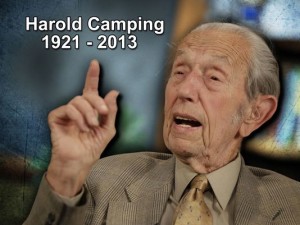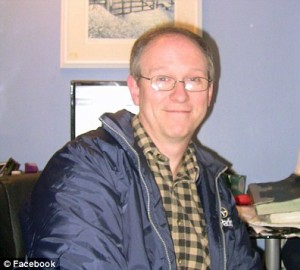Christian fundamentalists
Christian Fundamentalists *
Christian Fundamentalists or at least some of them have voiced extremely negative views on Atlantis. One site refers to “Atlantis and its satanic and occult underpinnings”, while an English language website(a) in Finland denounces the story of Atlantis as the work of the Anti-Christ, while on the other hand, prominent creationists, such as Bodie Hodge, James I. Nienhuis and others have no difficulty in accepting the possibility of Atlantis’ existence!
Another fundamentalist website, Genesis Veracity Foundation ventures to discuss Evenor and his wife Leucippe, the parents of Clieto who married Poseidon and in turn were the parents of the first ten kings of Atlantis (Critias 113c-114c). In the process it manages to give both Evenor and Leucippe a sex change, identifying the former as the biblical Eve and ‘her’ partner as Lucifer! It seems that their ability to understand Plato is even worse than their various interpretations of the Bible.
(a) Atlantis (archive.org) *
Atlantis and 2012
Atlantis and 2012. Some years ago there was a widespread rumour that an impending global disaster was about to befall us in December 2012, supposedly based on a particular reading of Mayan inscriptions. However, this interpretation was hotly disputed and of course, nothing happened, apart from the usual assortment of disasters which is the lot of the inhabitants of this cosmic speck that we live on.
A number of commentators attempted to link this ‘promised’ catastrophe with the story of Atlantis. One of the better known is Frank Joseph who has earned a comfortable living over recent years with his output of books on the subject of Atlantis. Not wishing that particular revenue stream dry up added Atlantis and 2012[0694], in which he claimed that the Mayan calendar was developed by Atlanteans and Lemurians. He suggests that we may be nearing the beginning of a new Ice Age invoking Hopi, Inca and Norse mythologies in support of his claims. Joseph’s credibility should now be clear. When the world did not end, Joseph revised his book and republished it as Atlantis and the Coming Ice Age[1074] in 2015!
 We were then told to forget 2012, in fact, we had only days left. Harold Camping a then ninety-year-old American fundamentalist Christian decreed that May 21st 2011 was the date of the ‘Rapture’ and the end of the world as we know it and when that passed uneventfully, he then declared October 21st as the date. He had previously suggested May 21st 1988, then Sept. 6th 1994 as the date of the Second Coming of Christ. Understandably, Camping’s biblical interpretation has been heavily criticised by scriptural authorities and lay people alike(a). Camping died in December 2013.
We were then told to forget 2012, in fact, we had only days left. Harold Camping a then ninety-year-old American fundamentalist Christian decreed that May 21st 2011 was the date of the ‘Rapture’ and the end of the world as we know it and when that passed uneventfully, he then declared October 21st as the date. He had previously suggested May 21st 1988, then Sept. 6th 1994 as the date of the Second Coming of Christ. Understandably, Camping’s biblical interpretation has been heavily criticised by scriptural authorities and lay people alike(a). Camping died in December 2013.
Camping had spent large amounts of money publicising his daft ideas. As usual, there were fools prepared to believe all this 2011 or 2012 nonsense. For my part, I planned a special holiday in 2013 to celebrate my 70th birthday. Which did occur.
Nevertheless, the spirit of Camping lived on in the person of Chris McCann (left) who announced that October 7th 2015 would be the Earth’s last day. It seems that this silliness is unending(h).
In 2010 a British service entitled Post Rapture Pet Care, run by atheists, offered to look after the pets of fundamentalist Christians when they are taken up to Heaven in the Rapture, for a fee of £69.99. A similar service is on offer in the US named Eternal Earth-Bound Pets.
National Geographic offers a rational explanation(d) of the reality behind this whole 2012 cynical scaremongering exercise. However, a somewhat less restrained view of the 2012 con job is provided by a ‘must read’ website(e)that highlights the harm being done to young and vulnerable people by this nonsense.
A recent discovery in Guatemala, reported in June 2012(f), has provided further evidence that the 2012 alarmist claims are unfounded and no more credible than the prognostications of Harold Camping. Let me spell it out, the latest find simply records that December 2012 will bring a Mayan time cycle (a baktun) to an end while another one will begin, in the same way, that we make a fuss at the end of a year, century or millennium.
However, for those that might be disappointed when 2013 arrives uneventfully, I can now reveal that in 2016 we shall, at last, have our catastrophe or so says Sylwester Kornowski(g). In a 94-page stew of religion and ‘science’, we are assured that April 2nd 2016 will bring on the cataclysm!
But don’t despair if 2016 fails to destroy us, because a newer prognostication is certain that 2027 will finally finish us off. Nevertheless, before getting too excited, it may be no harm to recall the words of Albert Einstein……“Two things are infinite: the universe and human stupidity; and I’m not sure about the universe.”
(a) https://www.cogwriter.com/harold-camping-may-21-2011.htm
(b) See: Archive 2739
(e) See: https://web.archive.org/web/20140811054919/https://2012hoax.wikidot.com/oldstart
(f) https://phys.org/news/2012-06-maya-archaeologists-unearth-monument.html
(g) https://www.cosmology-particles.pl/files/GtoG.pdf (Mercifully now offline)
Radiocarbon Dating
Radiocarbon Dating was developed by a team led by Willard F. Libby (1908-1980) just after World War II and won him a Nobel Prize for the work. However, in his  acceptance speech, Libby generously acknowledged the contribution made by the earlier work of Serge Korff (1906-1989).
acceptance speech, Libby generously acknowledged the contribution made by the earlier work of Serge Korff (1906-1989).
Radiocarbon Dating is based on the fact that when organisms die the amount of Carbon-14 in the remains decays at a fixed rate. Although initially hailed as a definitive dating method for organic remains, it soon became obvious that it was not quite as reliable a tool as initially thought, although still widely used.
Originally a Carbon-14 half-life of 5568±30 years was used and is known as the Libby half-life. Later this was revised to 5730±40 years and is known as the Cambridge half-life. The initial theory was based on the assumption that Carbon-14 was being produced at a constant rate. However, this constancy has been questioned, as it can vary as a result of changes in the earth’s magnetic field. The intervention of man in the form of atomic bomb tests briefly doubled the amount of Carbon-14 produced(I). Local events can also have a dramatic effect on measurements; for example, the Tunguska explosion left the soil there so enriched with Carbon-14 that it gives a date in the future (1)! Emilio Spedicato has also pointed out that Carbon-14 can be created in the atmosphere by any cometary or asteroidal impact and so alter the assumed constant ratio of C12 to C14.
Immanuel Velikovsky offered the following valuable observation(j) “as the method was refined, it started to show rather regular anomalies. First, it was noticed that, when radiocarbon dated, wood grown in the 20th century appears more ancient than wood grown in the 19th century. Suess explained the phenomenon by the fact that the increased industrial use of fossil carbon in coal and in oil changed the ratio between the dead carbon C12 and the C14 (radiocarbon) in the atmosphere and therefore also in the biosphere. In centuries to come a body of a man or animal who lived and died in the 20th century would appear paradoxically of greater age since death than the body of a man or animal of the 19th century, and if the process of industrial use of fossil, therefore dead, carbon continues to increase, as it is expected will be the case, the paradox will continue into the forthcoming centuries.”
Graham Phillips mentions[0034] that ‘recent evidence suggests that that the level of Carbon 14 in the atmosphere may have decreased permanently around 3,500 years ago due to changes in the earth’s magnetic field.’ This has resulted in dates around that period being up to 500 years out. Calibration figures are now available to take account of some of these deviations based on data from dendrochronology, ice and sediment cores and coral samples. Further refinements are not to be ruled out.
These weaknesses in radiocarbon dating have been seized upon by some fundamentalist Christian groups determined to justify their ‘young earth’ beliefs(d). However, attacks on the basic concepts underlying radiocarbon dating have been refuted by its supporters(e).
In 774/5 AD an increase of 1.2% of Carbon14 was detected through tree ring studies(c). This is thought to be the result of an external event such as a supernova or solar flare. Since many other episodes of a lesser or greater intensity have probably occurred, a growing shadow is being cast over the reliability of radiocarbon dating that may only be dissipated by further studies. Further complex recalibration is not to be ruled out, as it is highly unlikely that this eighth-century event was the only such occurrence.
A recent report(h) has drawn attention to the danger of using fossil fuels, as it pumps a type of carbon into the atmosphere that confuses the dating technique. Scientists say that by 2050, new clothes could have the same radiocarbon date as items 1,000 years old!
Radiocarbon dating is only useful up to a maximum of around 50,000 years. In February 2010, researchers at Queens University Belfast announced a new calibration curve that extends back over 50 millennia. The production of this calibration curve is the result of 30 years of research into the variations in atmospheric Carbon 14 caused by solar activity, the earth’s magnetic field and the oceans. Other radiometric dating methods are now available to deal with dates beyond this limit.
2010 also saw another important refinement of radiocarbon dating with the development of a ‘non-destructive carbon dating’ method which will enable the dating of very delicate, rare or highly valuable artefacts, without having to destroy any samples from them, as is required at present(a).
One strong dissenting voice was that of the archaeologist, Zahi Hawass, former Secretary-General of the Egyptian Supreme Council of Antiquities who said “Carbon-14 dating has a margin of error of 100 years. In order to date Egyptian dynasties, we need to have specific dates; you cannot use carbon dating,” Hawass explained further to Al-Masry Al-Youm(s), that “this technique shouldn’t be used at all in making changes to the chronology of the ancient Egypt, not even as a helpful addition.” Incidentally, in April 2015, a temperamental Hawass walked out of a debate with Graham Hancock over the inclusion of an image of Robert Bauval in Hancock’s presentation(g).
Hancock is highly critical of Carbon-14 as a dating method, particularly for megalithic sites and specifically Tiwanaku. The late Garrett Fagan took issue with Hancock regarding the dating of Tiwanaku in a 2000 post on Hancock’s site(aa). Hancock responded with a challenge to Fagan that led to a further article from him(z). The temperature rose with a further article from Hancock(ab).
Emmet Sweeney tells a disturbing story of how some establishments have treated inconvenient C14 results, recounting[700.221] “the fate of samples from the tomb of Tutankhamun subjected by the British Museum to radiocarbon testing. The samples, consisting of fibers of a reed mat and a palm kernel, produced dates of 844BC and 899BC respectively. These were broadly in line with the date for Tutankhamun predicted by Velikovsky, but roughly 500 years too recent for textbook chronology. Despite assurances given to Velikovsky that the results would be published, they never saw the light of day.” [758.xvi]
One can be forgiven for cynically interpreting Sweeney’s abandonment of radiocarbon dating as an absolute necessity, otherwise, all of Sweeney’s radical ancient chronology revisions collapse. Undoubtedly, all dating methods have their problems and radiocarbon dating is no exception. However, it makes better sense to address the problems, rather than discard the method entirely. I think it foolish to ignore entirely the body of work developed in connection with radiocarbon dating over the past three-quarters of a century.
Nevertheless, Sweeney makes the valid point that radiocarbon dating is based on the questionable assumption that the proportion of carbon14 in the atmosphere has always been constant, but does not offer any details regarding the extent of any such variations. While Sweeney may have his reasons for wanting to undermine the value of radiocarbon dating, as also do creationists. So in defence of radiocarbon dating a 2022 paper by David H. Bailey noted that “radiocarbon dates, determined by well-established procedures and calculations, are compared directly with dates determined by the other methods, thus permitting the radiocarbon dates to be accurately calibrated with distinct and independent dating techniques.”(x)
In Forgotten Civilization[867] and his earlier Pyramid Quest[456], Robert Schoch has drawn attention to some difficulties that have arisen with radiocarbon dating and the implications for Egyptology. A warning about future difficulties with the reliability of radiocarbon dating has been issued by Heather Graven, a climate-physics researcher at Imperial College London. She has found that the rate of fossil-fuel emissions is skewing the carbon ratios used to determine an object’s age. She estimates that by 2050 atmospheric carbon dioxide will make new organic material appear to be 1,000 years old(2). Graham Hancock has also expressed reservations regarding the use of radiocarbon dating, urging both caution and open-mindedness(m).
Hancock’s son, Sean, has written a couple of papers on the subject of radiocarbon dating, one concerning the subject generally(u), the other, regarding its application at Tiwanaku(v). He concluded the former with the comment that “radiocarbon dating is useful as a complement to other data; this is when it is strong. Until the day comes that every variable can be controlled and every error eliminated radiocarbon dates will never have the final word on archaeological sites.” Concerning Tiwanaku, he is equally critical noting that “The question we have to ask is whether or not these radiocarbon dates are archaeologically representative? I believe the answer to that question is no. What is called for is a more thorough excavation programme at Tiahuanaco that would once and for all close this case.”
An even more jaundiced view of current dating difficulties is expressed(l) by Jonathan Gray.
One of these, namely, the potassium/argon method has been claimed by writers such as Richard Milton[521] to have its inherent problems and must be treated with caution. It appears that although dating methods have advanced greatly further improvements can be expected.
The latest refinement of radiocarbon dating techniques has shortened the time taken from six days to two and additionally, now allows on-site testing(f).
The Malagabay website(n) posted a series of blogs through April 2017 under the heading of ‘Deranged Dating’ highlighting weaknesses in radiocarbon dating!
There is now a valuable list of papers(o), with links, devoted to the many problems that have gradually emerged concerning radiocarbon dating. This is just part of the ‘A New Chronology’ website(p).
June 2018 saw a report issued from Cornell University that highlighted some inaccuracies that have been found in dates relating to the southern Levant region, which includes parts of Jordan, Israel and Egypt. Archaeologist Sturt Manning and his colleagues “have revealed variations in the radiocarbon cycle at certain periods, affecting frequently cited standards used in archaeological and historical research.” (q)(t)
Currently, standard calibration curves assume that at any given time radiocarbon levels are similar and stable everywhere across each hemisphere. It seems therefore that the calibration of radiocarbon dates will have to take account of regional factors in the future. In March 2020 a further study(r) from Cornell confirmed the value of regional calibration, which can now be applied to contentious issues such as the date of Tutankhamun’s death and the eruption of Thera (Santorini).
In September 2021 a paper in the Journal of Archaeological Science claimed to have solved the problem of current radiocarbon analysis typically used to reconstruct past human demographic changes relies on a method “easily skewed by radiocarbon calibration curves and measurement uncertainty.” Lead author Michael Holton Price claims that he has developed a new statistical method for summarising sets of radiocarbon dates. Price developed an approach to estimating prehistoric populations that use Bayesian reasoning and a flexible probability model that allows researchers to overcome the problem of ‘equifinality’, where a single carbon14 value can correspond to a different date. “This paper is just the first step. Next, through ‘data fusion’, the team will add ancient DNA and other data to radiocarbon dates for even more reliable demographic reconstructions.” (w)
(1) New Scientist (7/9/02, p.14)
(2) Fortean Times (FT340) May 2016, p.16
(a) https://www.eurekalert.org/pub_releases/2010-03/acs-nmc031210.php
(c) https://www.nature.com/news/ancient-text-gives-clue-to-mysterious-radiation-spike-1.10898
(d) https://www.asa3.org/ASA/PSCF/1993/PSCF12-93Yang.html
(h) https://www.bbc.com/news/science-environment-33594658
(j) https://www.varchive.org/ce/c14.htm
(l) https://ancientpatriarchs.wordpress.com/2016/06/09/why-arent-we-told-radiometric-dating-problems/
(m) https://grahamhancock.com/carbon-dating-hancock/
(n) https://malagabay.wordpress.com/
(o) https://anewchronology.blogspot.com.mt/2001/04/problems-with-carbon-14-dating-methods.html
(p) https://anewchronology.blogspot.com.mt/
(q) https://www.eurekalert.org/pub_releases/2018-06/cu-cri060518.php
(r) https://www.q-mag.org/new-fine-tuning-of-radiocarbon-dating-can-rewrite-ancient-events.html
(s) https://www.egyptindependent.com/egyptian-archeologists-comment-carbon-dating/
(t) https://web.archive.org/web/20160204024918/http://halfpasthuman.com/essays/c14points.html
(w) A statistical fix for archaeology’s dating problem — ScienceDaily
(x) How reliable is radiocarbon dating? (archive.org)
(z) https://www.hallofmaat.com/methodological/an-answer-to-graham-hancock/ *
(aa) https://grahamhancock.com/phorum/read.php?1,1772 *
(ab) https://grahamhancock.com/phorum/read.php?1,2590 *

